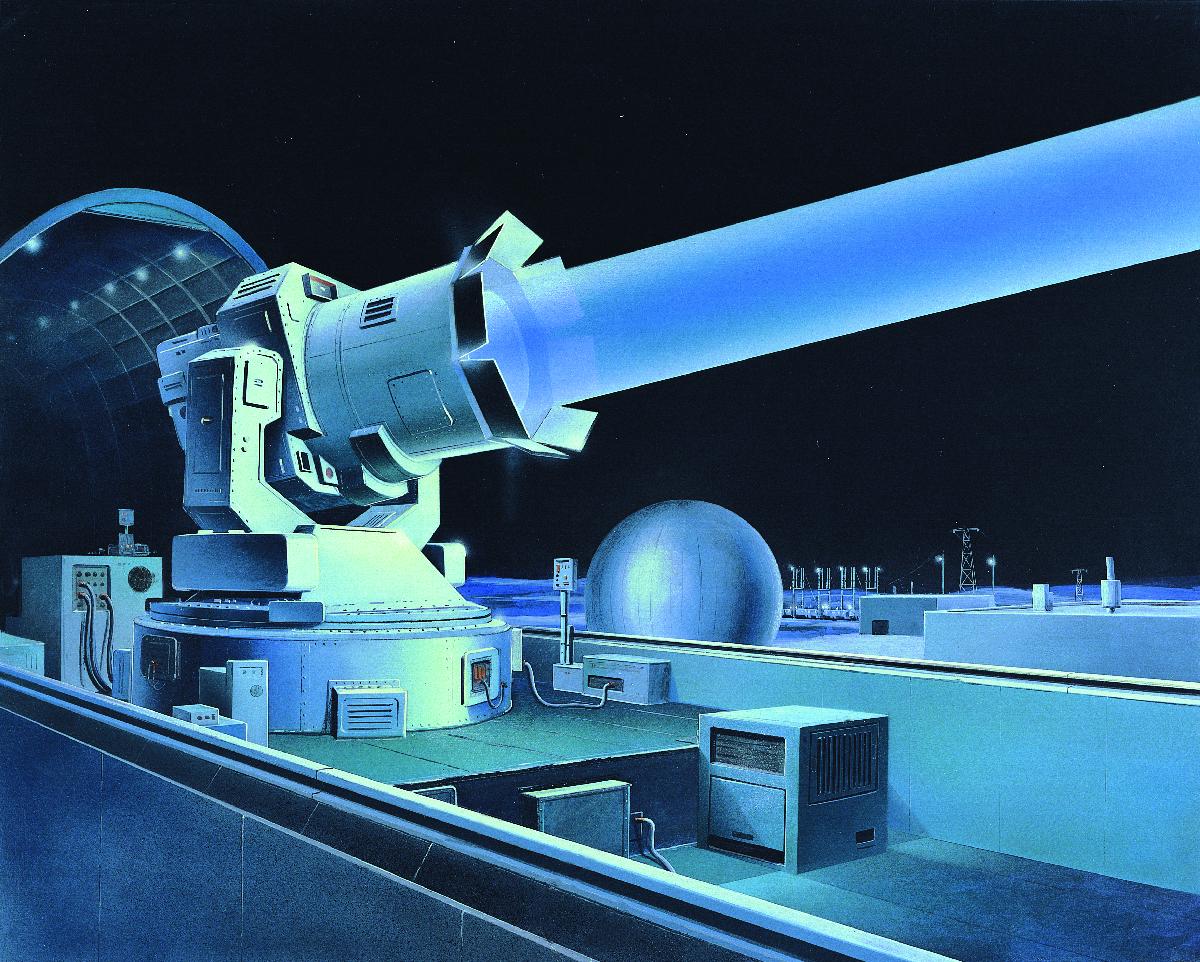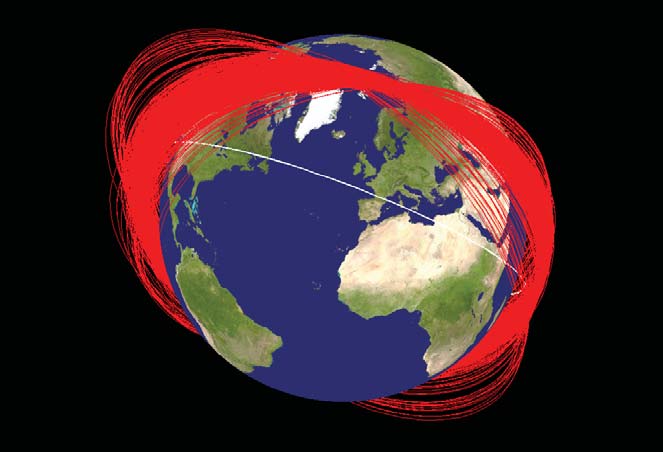|
2019 Indian Anti-satellite Missile Test
On 27 March 2019, India tested an anti-satellite weapon (ASAT) during an operation code named Mission Shakti ( IAST: Śakti; lit. ''"Power"''). The target of the test was a satellite present in a low Earth orbit, which was hit with a kinetic kill vehicle. The ASAT test utilized a modified anti-ballistic missile interceptor code-named Prithvi Defence Vehicle Mark-II which was developed under Project XSV-1. The test made India the fourth country after the United States, Russia and China to have tested an ASAT weapon. The test sparked concerns regarding the creation of space debris. The Indian government tried to address these concerns by saying that the debris generated from the test would not last for a long duration. India's successful demonstration of the ASAT capability is said to signify its ability to intercept an intercontinental ballistic missile (ICBM). The ASAT weapon is meant to act as a deterrent. Background The Indian anti-satellite (ASAT) program utilized ' ... [...More Info...] [...Related Items...] OR: [Wikipedia] [Google] [Baidu] |
Anti-satellite Missile
Anti-satellite weapons (ASAT) are space weapons designed to incapacitate or destroy satellites for strategic or tactical purposes. Several nations possess operational ASAT systems. Although no ASAT system has been utilised in warfare, a few countries ( China, India, Russia, United Kingdom and the United States) have successfully shot down their own satellites to demonstrate their ASAT capabilities in a show of force. ASATs have also been used to remove decommissioned satellites. ASAT roles include: defensive measures against an adversary's space-based and nuclear weapons, a force multiplier for a nuclear first strike, a countermeasure against an adversary's anti-ballistic missile defence (ABM), an asymmetric counter to a technologically superior adversary, and a counter-value weapon. Use of ASATs generates space debris, which can collide with other satellites and generate more space debris. A cascading multiplication of space debris could cause Earth to suffer from Ke ... [...More Info...] [...Related Items...] OR: [Wikipedia] [Google] [Baidu] |
Intercontinental Ballistic Missile
An intercontinental ballistic missile (ICBM) is a ballistic missile with a range greater than , primarily designed for nuclear weapons delivery (delivering one or more thermonuclear warheads). Conventional, chemical, and biological weapons can also be delivered with varying effectiveness, but have never been deployed on ICBMs. Most modern designs support multiple independently targetable reentry vehicles (MIRVs), allowing a single missile to carry several warheads, each of which can strike a different target. Russia, the United States, China, France, India, the United Kingdom, and North Korea are the only countries known to have operational ICBMs. Early ICBMs had limited precision, which made them suitable for use only against the largest targets, such as cities. They were seen as a "safe" basing option, one that would keep the deterrent force close to home where it would be difficult to attack. Attacks against military targets (especially hardened ones) still demanded t ... [...More Info...] [...Related Items...] OR: [Wikipedia] [Google] [Baidu] |
Electromagnetic Pulse
An electromagnetic pulse (EMP), also a transient electromagnetic disturbance (TED), is a brief burst of electromagnetic energy. Depending upon the source, the origin of an EMP can be natural or artificial, and can occur as an electromagnetic field, as an electric field, as a magnetic field, or as a conducted electric current. The electromagnetic interference caused by an EMP disrupts communications and damages electronic equipment; at higher levels of energy, an EMP such as a lightning strike can physically damage objects such as buildings and aircraft. The management of EMP effects is a branch of electromagnetic compatibility (EMC) engineering. EMP weapons are designed to deliver the damaging effects of a high-energy EMP that will disrupt unprotected infrastructure in the country, thus the employment of an EMP weapon against a country is the scenario of war most likely to collapse the functionality of the electrical network of the country. General characteristics An electro ... [...More Info...] [...Related Items...] OR: [Wikipedia] [Google] [Baidu] |
Directed-energy Weapon
A directed-energy weapon (DEW) is a ranged weapon that damages its target with highly focused energy without a solid projectile, including lasers, microwaves, particle beams, and sound beams. Potential applications of this technology include weapons that target personnel, missiles, vehicles, and optical devices."Daily Telegraph, 12th September 2013" ''Golden Eye-style energy beam is developed by Nato scientists'', Oct. 08, 2013"Milsat Magazine, Satnews Daily, June 24th 2009" ''U.S. Navy Laser Versus UAVs... Laser Wins...'', Oct. 08, 2013 In the ... [...More Info...] [...Related Items...] OR: [Wikipedia] [Google] [Baidu] |
Indian Ballistic Missile Defence Programme
The Indian Ballistic Missile Defence Program is an initiative to develop and deploy a multi-layered ballistic missile defence system to protect India from ballistic missile attacks. It was launched in 2000 after Kargil War by the Atal Bihari Vajpayee government. Testing was carried out and continuing , and the system was expected to be operational four years from then according to the head of the country's missiles development programme, Vijay Kumar Saraswat. Introduced in light of the ballistic missile threat from Pakistan and China, it is a double-tiered system consisting of two land and sea-based interceptor missiles, namely the Prithvi Air Defence (PAD) missile for high altitude interception, and the Advanced Air Defence (AAD) Missile for lower altitude interception. The two-tiered shield should be able to intercept any incoming missile launched from 5,000 kilometres away. The system also includes an overlapping network of early warning and tracking radars, as well as comman ... [...More Info...] [...Related Items...] OR: [Wikipedia] [Google] [Baidu] |
RISAT-1
Radar Imaging Satellite 1 or RISAT-1, was an Indian remote sensing satellite built by the Indian Space Research Organisation and operated by National Technical Research Organisation . The second RISAT satellite to be launched, it used a C-band 5.35 GHz synthetic-aperture radar (SAR) for Earth observation. The launch of RISAT-1 came several years after that of RISAT-2, which carried an Israeli-built X-band radar. The RISAT-2 mission was prioritised over RISAT-1 following the 2008 Mumbai attacks, resulting in RISAT-1 being delayed by several years. Satellite description RISAT-1 had a mass at liftoff of , making it the heaviest Earth observation satellite to be launched by India, and the heaviest satellite to be launched using a Polar Satellite Launch Vehicle. It had the capability to take images of Earth during day and night, as well as in cloudy conditions. The satellite is equipped with a 160 × 4 Mbit/s data handling system, 50 Newton-metre-second reaction whe ... [...More Info...] [...Related Items...] OR: [Wikipedia] [Google] [Baidu] |
Treaty On The Non-Proliferation Of Nuclear Weapons
The Treaty on the Non-Proliferation of Nuclear Weapons, commonly known as the Non-Proliferation Treaty or NPT, is an international treaty whose objective is to prevent the spread of nuclear weapons and weapons technology, to promote cooperation in the peaceful uses of nuclear energy, and to further the goal of achieving nuclear disarmament and general and complete disarmament. Between 1965 and 1968, the treaty was negotiated by the Eighteen Nation Committee on Disarmament, a United Nations-sponsored organization based in Geneva, Switzerland. Opened for signature in 1968, the treaty entered into force in 1970. As required by the text, after twenty-five years, NPT Parties met in May 1995 and agreed to extend the treaty indefinitely. More countries are parties to the NPT than any other arms limitation and disarmament agreement, a testament to the treaty's significance. As of August 2016, 191 states have become parties to the treaty, though North Korea, which acceded in 1985 ... [...More Info...] [...Related Items...] OR: [Wikipedia] [Google] [Baidu] |
Institute For Defence Studies And Analyses
The Manohar Parrikar Institute for Defence Studies and Analyses (MP-IDSA) (formerly known as: Institute for Defence Studies and Analyses (IDSA)), New Delhi, is India's foremost think tank for advanced research in international relations, especially defence, strategic and security issues, and providing training to civilian, military and paramilitary officers of the Indian government. It is funded by the Indian Ministry of Defence but operates as a non-partisan and autonomous body. It aims to promote national and international security by carrying out research on defence and security-related issues and disseminating the knowledge among the policy-makers and wider public. The current director general is Ambassador Sujan R. Chinoy, who took over the reins of IDSA on 3 January 2019 on a three-year assignment. MP-IDSA is the only think-tank in India whose director general is appointed by the Appointments Committee of the Cabinet, chaired by the prime minister of India. IDSA has lo ... [...More Info...] [...Related Items...] OR: [Wikipedia] [Google] [Baidu] |
Polar Orbit
A polar orbit is one in which a satellite passes above or nearly above both poles of the body being orbited (usually a planet such as the Earth, but possibly another body such as the Moon or Sun) on each revolution. It has an inclination of about 60 - 90 degrees to the body's equator. Launching satellites into polar orbit requires a larger launch vehicle to launch a given payload to a given altitude than for a near-equatorial orbit at the same altitude, because it cannot take advantage of the Earth's rotational velocity. Depending on the location of the launch site and the inclination of the polar orbit, the launch vehicle may lose up to 460 m/s of Delta-v, approximately 5% of the Delta-v required to attain Low Earth orbit. Usage Polar orbits are used for Earth-mapping, reconnaissance satellites, as well as for some weather satellites.Science Focus 2nd Edition 2, pg. 297 The Iridium satellite constellation uses a polar orbit to provide telecommunications services. Near- ... [...More Info...] [...Related Items...] OR: [Wikipedia] [Google] [Baidu] |
Defence Research And Development Organisation
The Defence Research and Development Organisation (DRDO) ( IAST: ''Raksā Anūsandhān Evam Vikās Sangaṭhan'') is the premier agency under the Department of Defence Research and Development in Ministry of Defence of the Government of India, charged with the military's research and development, headquartered in Delhi, India. It was formed in 1958 by the merger of the Technical Development Establishment and the Directorate of Technical Development and Production of the Indian Ordnance Factories with the Defence Science Organisation. Subsequently, Defence Research & Development Service (DRDS) was constituted in 1979 as a service of Group 'A' Officers / Scientists directly under the administrative control of Ministry of Defence. With a network of 52 laboratories that are engaged in developing defence technologies covering various fields like aeronautics, armaments, electronics, land combat engineering, life sciences, materials, missiles, and naval systems, DRDO is India's lar ... [...More Info...] [...Related Items...] OR: [Wikipedia] [Google] [Baidu] |
2007 Chinese Anti-satellite Missile Test
On 11 January 2007, China conducted an anti-satellite missile test. A Chinese weather satellite—the FY-1C (COSPAR 1999-025A) polar orbit satellite of the Fengyun series, at an altitude of , with a mass of —was destroyed by a kinetic kill vehicle traveling with a speed of in the opposite direction (see '' Head-on engagement''). It was launched with a multistage solid-fuel missile from Xichang Satellite Launch Center or nearby. ''Aviation Week & Space Technology'' magazine first reported the test on 17 January 2007. The report was confirmed on 18 January 2007 by a United States National Security Council (NSC) spokesperson.BBC News (2007)Concern over China's missile test Retrieved January 20, 2007. The Chinese government did not publicly acknowledge that the test had occurred until 23 January 2007 when the Chinese Foreign Ministry issued a statement confirming the test. China claims it formally notified the U.S., Japan and other countries about the test in advance. It was th ... [...More Info...] [...Related Items...] OR: [Wikipedia] [Google] [Baidu] |
Terminal High Altitude Area Defense
Terminal High Altitude Area Defense (THAAD), formerly Theater High Altitude Area Defense, is an American anti-ballistic missile defense system designed to shoot down short-, medium-, and intermediate-range ballistic missiles in their terminal phase (descent or reentry) by intercepting with a hit-to-kill approach. THAAD was developed after the experience of Iraq's Scud missile attacks during the Gulf War in 1991. The THAAD interceptor carries no warhead, instead relying on its kinetic energy of impact to destroy the incoming missile. Originally a United States Army program, THAAD has come under the umbrella of the Missile Defense Agency. The Navy has a similar program, the sea-based Aegis Ballistic Missile Defense System, which also has a land component ("Aegis Ashore"). THAAD was originally scheduled for deployment in 2012, but initial deployment took place in May 2008. THAAD has been deployed in the United Arab Emirates, Israel, Romania, and South Korea. On 17 January 2 ... [...More Info...] [...Related Items...] OR: [Wikipedia] [Google] [Baidu] |






